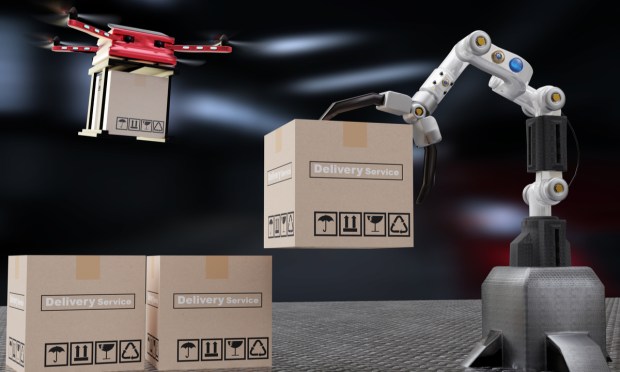Why Sony Venture Fund is Still Bullish on Robots, and Still Thinking About Gen AI

While some people dream of the future, others work their hardest to make it reality.
The innovations that these entrepreneurs invent, build and bring to market are at their best the innovations that transform not just lives — but frequently the entire world — for the better.
That’s why PYMNTS CEO Karen Webster sat down with Austin Noronha, managing director U.S., and Ludovic Copéré, senior investment director, at Sony Ventures, to get their thoughts on the trends driving future-fit solutions across areas including artificial intelligence (AI), robotics, DeepTech, HealthTech, FinTech, InsurTech and more.
After all, life in a connected economy is driven by investments in promising innovations.
Sony’s investment funds are divided into two funds: one is a 100% Sony money fund, and the other is a fund with capital from external LPs, many of whom are mega banks from Japan.
The businesses being funded by these investment vehicles, the two investors hope, will one day successfully commercialize innovations that will serve as tomorrow’s foundational infrastructure.
See also: Finding The Digital Economy’s Product Market FIT
A Journey in Early-Stage Investments
Noronha explained Sony has a unique perspective on the financial industry due to its extensive financial services business in Japan, which has allowed it to identify promising investment opportunities.
Sony’s focus on the FinTech side is more about enabling next generation security technologies and building an advanced tech stack rather than investing in pure payment players.
“We have a global thesis for FinTech that we put together, where a core area for us has been very focused on the underlying trust layer. Think about KYC [know your customer] authentication and things like antifraud,” Copéré said.
“Keeping the interest of these [Japanese financial institution] LPs in mind, we started taking the initiative to make more investments in FinTech across the stack. So that’s the rationale for us,” Noronha added.
And Sony’s two venture vehicles are constantly on the lookout for undervalued assets that have the potential to become great businesses.
Their investments are not just limited to the FinTech space. In fact, the company is also keen on deploying capital across the robotics industry, with a particular focus on practical applications.
“Where we’ve had success is on the services side of robotics, in the logistics and warehouse space where [the robots] can do repetitive tasks like a human,” Noronha said.
As PYMNTS has previously reported, robotic solutions for warehouse tasks are a greenfield opportunity area — one that is already beginning to shift the balance of power in fulfillment centers from machines supporting people, to people supporting machines.
The venture investors explained that Sony has invested primarily across three categories of robotics: robots for warehouses, small devices for patients with disabilities, and cloud-based infrastructure for controlling multiple robots.
But Sony’s investments are not limited to just FinTech and robotics. The company is also making waves in the healthcare sector with its investments in the medical, digital and diagnostic industries.
Noronha believes that healthcare is an interesting space, particularly in India, due to the cost structure and the mechanisms they have developed. He explained that, from his point of view, insurance can be combined with care delivery to create new ecosystems in healthcare.
“Taking an innovative approach to healthcare financing can make a real difference in people’s lives,” Noronha said.
See also: Firms Grow Profits, Cut Costs with Three F’s of Automation
Shiny Object Appeal vs Commercial Potential
The possibilities for practical applications of technology are endless — but sometimes innovations can turn out to be nothing more than solutions in search of problems.
That’s why, as Noronha emphasized, successful investments all boil down to the team actually building the business.
“The team is very important,” Noronha said, explaining that particularly in buzzier areas like generative AI, “The team is going to create the differentiated opportunities.”
For more regulated industries, including financial services and healthcare, Copéré added that Sony sees, “an interesting AI category emerging in terms of privacy, data, and even synthetic data generation.”
“For more specific and concrete business use cases where there’s a point of not training models on actual PII (personally identifiable information), given the regulatory landscape, there are probably going to be interesting opportunities,” he said.
And beneficial opportunities for the startups involved, given that the checks being written by Sony’s wholly owned first fund range anywhere from $250,000 to $2 million, while the amount of dry powder being deployed from Sony’s other fund is in the ballpark of $2 million to $10 million per investment.
Still, the fund has not pulled the trigger on anything related to generative AI, “at least since the term ‘generative AI’ was created,” the investors told PYMNTS.
“For AI, the way we look at the company is around how differentiated will they be compared to legacy systems or large corporations — and whether they are working on their own language models and having their application stack on top of it, versus plugging in to someone else’s,” Noronha said.
That said, the Sony investors were quick to emphasize that many of their investments are “using AI, and have been for quite some time.”
